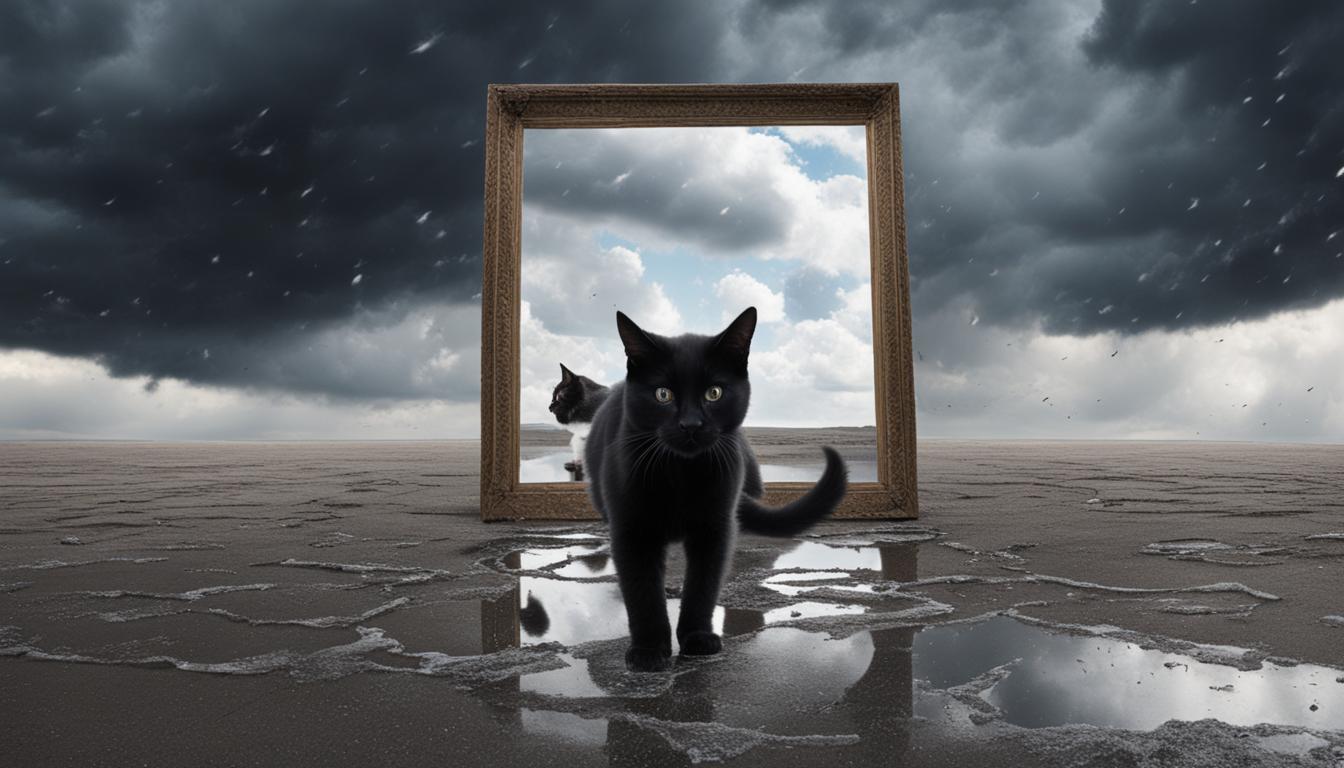Originally posted on January 1, 2024 @ 5:39 am
Have you ever wondered how to give someone bad luck? Whether it’s for a tabletop roleplaying game or exploring real-life practices like witchcraft, there are creative and ethical approaches to cursing and bestowing misfortune. In this article, we’ll delve into the fascinating realm of curses, spells, and the power of misfortune. So, let’s dive in and discover the secrets of giving someone bad luck!
Key Takeaways:
- Implement curses creatively and ethically in games, considering the player’s enjoyment and not overly disadvantaging them.
- Explore real-life practices like lemon curses, which are believed to bring bad luck and misfortune upon deserving targets.
- Visit the Museum of Witchcraft and Magic to gain insights into various forms of witchcraft and the diversity of curse rituals.
- Understand the cultural influence of witchcraft in popular culture and separate fact from fiction.
- Embrace personal interpretation in witchcraft, allowing individuals to develop their own magical path and practices.
Implementing the Curse Mechanically in D&D 5e

When it comes to implementing a curse in Dungeons & Dragons 5e, it’s important to strike a balance between making the player feel cursed and avoiding constant disadvantage. Randomly imposing disadvantage on rolls all the time can be frustrating for the player and may hinder their enjoyment of the game. So, how can we creatively and ethically curse someone with bad luck in D&D 5e?
One suggestion from the community is to introduce a countdown mechanic. At the start of each session, the DM can roll a d10 and count down from that number with each d20 roll the cursed player makes. Let’s say the roll is a 7. The player starts with 7 and, with each d20 roll they make, the countdown decreases by 1. When it reaches zero, the next d20 roll where the player would have had advantage, they lose it. This creates a sense of anticipation and unlucky streaks, without completely hindering the player’s every action.
Another approach is to incorporate “Misfortune Points.” Whenever the cursed player rolls a critical failure or uses the power of the magic tattoo, they accumulate Misfortune Points. The DM can later use these points to increase the severity of consequences when the player rolls a critical failure. For example, instead of simply missing an attack, the critical failure might result in the player knocking themselves unconscious or causing damage to their allies.
This table summarizes the different curse mechanics discussed:
| Curse Mechanic | Description |
|---|---|
| Countdown | A d10 is rolled at the start of each session, and the countdown decreases with each d20 roll the player makes. When it reaches zero, the player loses advantage. |
| Misfortune Points | Player accumulates Misfortune Points when rolling a critical failure or using the tattoo’s power. The DM can use these points to make critical failures have more severe consequences. |
Implementing curse mechanics in D&D 5e requires careful consideration to ensure the player’s enjoyment while still providing a sense of being cursed. By incorporating unique mechanics like the countdown or Misfortune Points, the DM can create an engaging and immersive experience that captures the essence of bad luck without overwhelming the player.
The Power of Lemon Curses
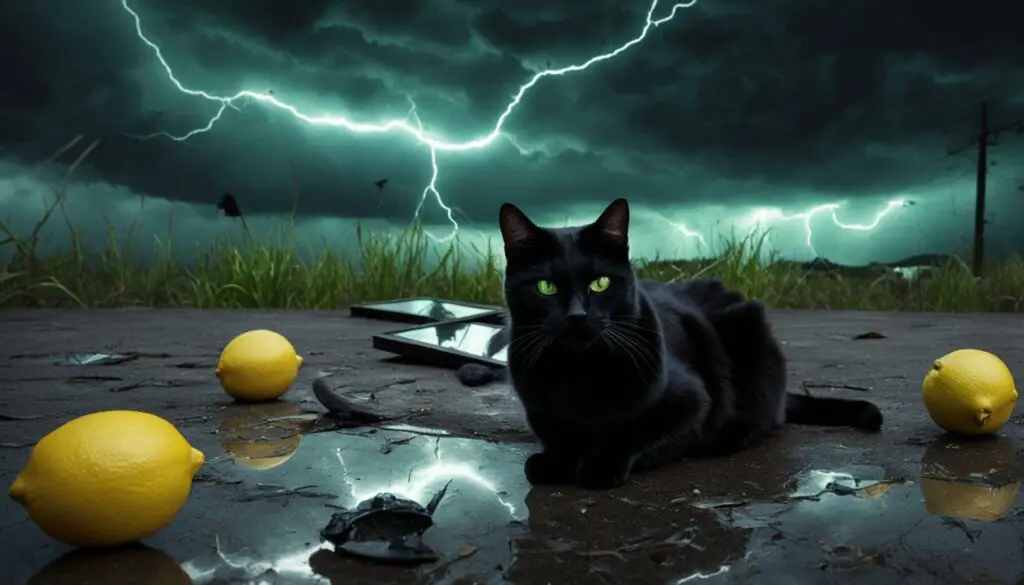
In the realm of witchcraft, lemon curses hold significant power as a means to bring bad luck and misfortune upon those who have intentionally caused harm. These curses, featured in various modern practices like Hoodoo and Wicca, are simple to perform and require just a few ingredients – lemons, needles, and red thread.
Many practitioners believe that lemon curses work most effectively when directed towards individuals who truly deserve the misfortune. Rooted in the principles of justice and retribution, these spells are often used as a way to right the wrongs committed by the target.
Performing a Lemon Curse Spell
To perform a lemon curse spell, you will need:
- 1 fresh lemon
- Needles or pins
- Red thread or string
Follow these steps to cast the lemon curse:
- Take the fresh lemon and visualize the target of the curse, focusing on their actions or harm they have caused.
- Using the needles or pins, pierce the lemon multiple times, charging each piercing with your intention to bring bad luck.
- Wrap the lemon with the red thread or string, symbolizing the entanglement of misfortune around the target.
- Keep the lemon in a safe, hidden place, allowing the curse to take effect over time.
It is important to note that the ethical implications of casting a curse should always be considered. Many practitioners believe in the concept of “harm none,” emphasizing the need to use curses responsibly and only against those who truly deserve them.
“The power of lemon curses lies in their ability to bring balance and justice to situations where harm has been done. When performed ethically and with just cause, these spells can serve as a tool for accountability and restitution.” – Witchcraft Practitioner
| Witchcraft Practice | Concept of Lemon Curses |
|---|---|
| Hoodoo | Lemon curses are considered a form of sympathetic magic, channeling the energy of the lemon to manifest bad luck upon the target. |
| Wicca | In Wicca, lemon curses are often incorporated into protection spells or used as a means of banishing negative energy from a person’s life. |
By exploring different forms of witchcraft, we gain a deeper understanding of the diverse practices and approaches that exist within the magical community. Lemon curses, with their rich history and ethically nuanced nature, serve as a captivating example of the power and complexity of witchcraft.
Exploring Witchcraft at the Museum of Witchcraft and Magic
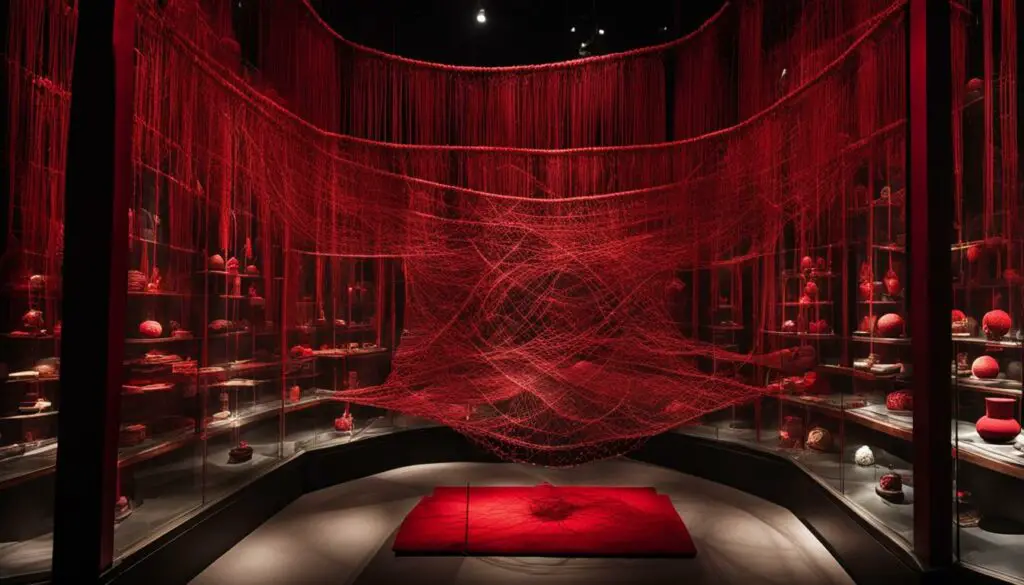
Located in Boscastle, the Museum of Witchcraft and Magic is a captivating destination that offers a fascinating glimpse into the world of witchcraft throughout history. The museum showcases a wide range of artifacts related to witchcraft, including modern practices that continue to shape the world of magic.
The founder of the museum, who identifies as a practicing witch, emphasizes the lack of unified structure in witchcraft. Instead, the appeal lies in the personal interpretation and individual paths followed by practitioners. This ethos is reflected in the exhibits, which highlight the diversity and complexity of witchcraft as it has evolved over time.
Visitors to the museum will encounter a variety of intriguing displays that shed light on different aspects of witchcraft, such as Victorian death masks, curses, charms, and the use of red thread in many curses. From ancient rituals to modern practices, the artifacts tell a rich and captivating tale of the power and influence of witchcraft.
One notable exhibit at the Museum of Witchcraft and Magic is the use of red thread in various curses. This thread is often woven or tied in intricate patterns to symbolize the binding of the curse and its intended target. The red thread is believed to hold symbolic power, acting as a conduit for the energy of the curse.
Here is an example of the red thread used in a curse:
| Item | Description |
|---|---|
| A red thread tied in knots to bind the curse |
The use of red thread in curses is just one example of the intriguing artifacts and practices explored at the Museum of Witchcraft and Magic. It invites visitors to delve into the world of witchcraft and gain a deeper understanding of its origins, practices, and enduring influence in modern times.
Tales of Curses and Misfortune
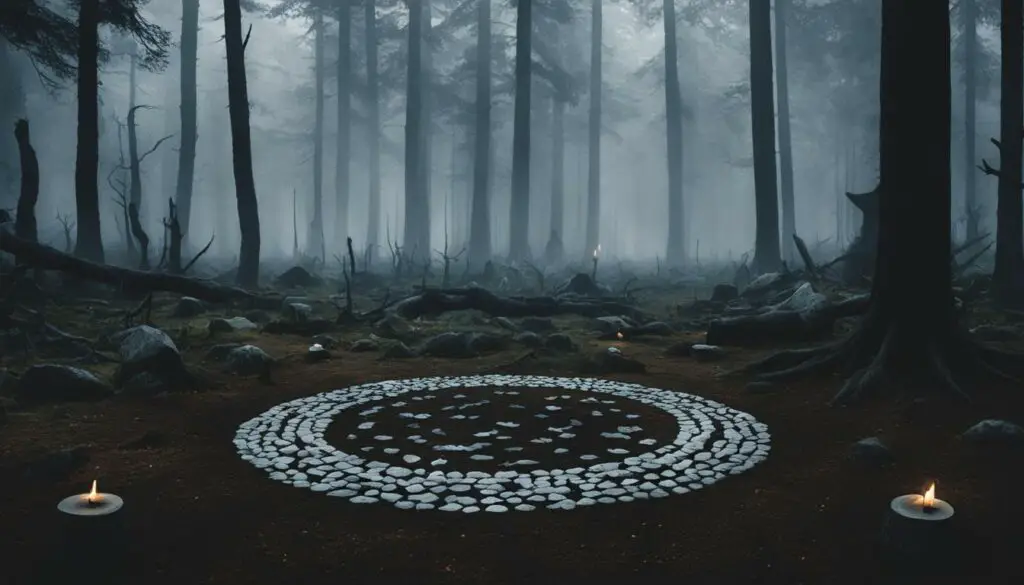
Step into the intriguing world of curse rituals and misfortune-inducing methods at the Museum of Witchcraft and Magic. This renowned museum showcases a diverse collection of exhibits that delve into the captivating realm of bestowing bad luck upon others.
One fascinating example of curse rituals involves the preparation of a goat’s skin. The ritual entails cutting out a right hand from the skin, piercing it with a needle and red thread, and ultimately nailing it to the door of the victim’s house. The prominent use of red thread, a common element in curse rituals, underscores its significance in invoking misfortune.
Another charmingly ominous exhibit features bird skulls intricately tied to garlic with black pins. This unique charm is believed to bring forth bad luck upon the intended target. The combination of bird skulls, garlic, and black pins creates a potent symbol of misfortune.
These exhibits provide a glimpse into the rich tapestry of curse rituals and misfortune charms found in various cultural practices. The detailed and visually captivating displays highlight the significance of symbolic elements and shed light on the diverse traditions surrounding the bestowal of bad luck.
To further illustrate the allure of these curse rituals and misfortune-inducing methods, take a moment to appreciate the visual representation below:
| Curse Rituals | Misfortune Charms |
|---|---|
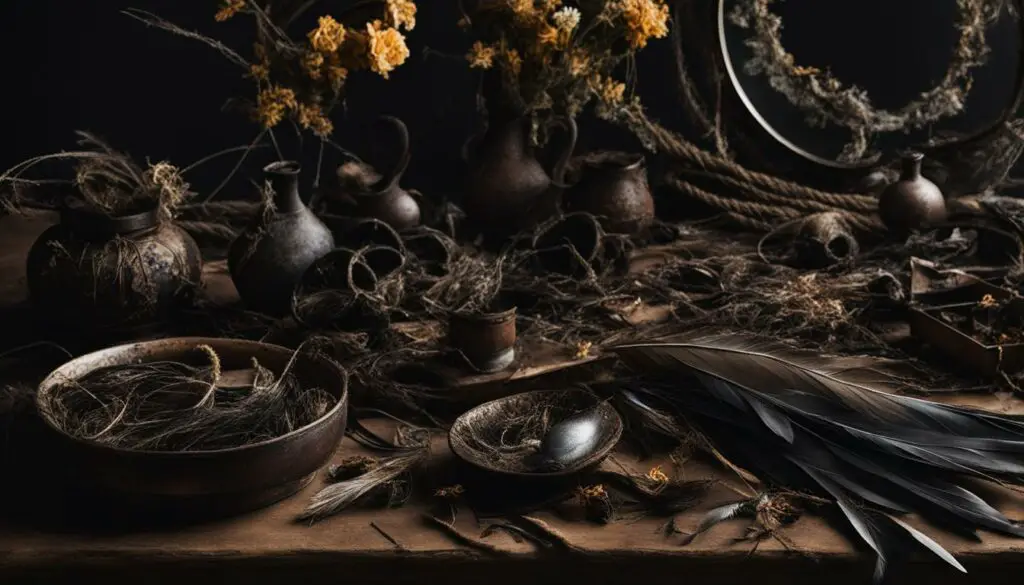 |
Immerse yourself in the mystique and enigmatic world of curses and misfortune-inducing rituals at the Museum of Witchcraft and Magic. Explore the power behind these ancient practices and gain a deeper appreciation for the beliefs and traditions surrounding them. Discover the charm, intrigue, and cautionary tales associated with curse rituals and misfortune charms, as they continue to captivate the imagination of both believers and skeptics alike.
The Power of Misfortune Points

In the game scenario, players can accumulate “Misfortune Points” when they experience critical failures or utilize the power of the cursed tattoo. These points serve as a mechanism for the Dungeon Master (DM) to enhance the consequences of critical failures, adding a layer of unpredictability and tension to the gameplay.
When a player rolls a critical failure or activates the tattoo’s power, they earn Misfortune Points. The DM can then utilize these points to make critical failures have more severe repercussions, resulting in captivating and memorable gameplay moments.
The consequences of critical failures can vary depending on the DM’s discretion and the specific game scenario. Here are some examples of the potential consequences that Misfortune Points can bring:
- Falling prone: A critical failure could cause the player’s character to lose balance, falling to the ground and potentially becoming vulnerable to attacks.
- Self-inflicted damage: Critical failures might result in the character accidentally harming themselves, such as tripping and cutting themselves with their own weapon or triggering a trap.
- Unconsciousness: In more extreme cases, a critical failure could lead to the character knocking themselves unconscious, requiring assistance from their fellow party members.
The utilization of Misfortune Points introduces an element of risk and consequence to critical failures in the game. It ensures that players who accumulate Misfortune Points experience the negative effects in a spectacular manner, often overshadowing the failures of their fellow party members. This dynamic adds excitement and narrative tension to the game, immersing players in a world where the consequences of their actions have significant weight.
Note: The image above illustrates the concept of accumulating Misfortune Points in the game, adding an extra layer of challenge and unpredictability to the gameplay experience.
The Ethics of Cursing and Bad Luck Spells
When it comes to the practice of cursing and causing bad luck, ethical considerations play a significant role. The question of whether it is morally acceptable to curse someone or perform bad luck spells is a topic of debate among practitioners. Many believe that curses should only be directed towards individuals who deserve them, ensuring that the misfortune is justified.
Justified curses are based on the principle that the recipient of the curse has caused harm intentionally or through their actions. The ethical foundation of cursing lies in the belief that it is a form of justice or protection, aligning with the idea that those who bring harm upon others should face the consequences. By targeting those who deserve the curse, practitioners aim to restore balance and create a sense of justice in the world.
However, it is crucial to understand the limitations of curses. Many practitioners believe that curses only have an effect if the recipient truly deserves them. The intentions and motivations behind the curse are instrumental in determining its effectiveness. The ethical practitioner will consider the consequences of their actions and ensure that the curse serves a just purpose.
Furthermore, the act of cursing or performing bad luck spells is not taken lightly by ethical practitioners. It is vital to approach these practices with a responsible mindset and a thorough understanding of the potential consequences. The focus should always be on ethical boundaries and respecting the free will of others.
The Power of Intention and Consent
An important aspect of ethical cursing and bad luck spells lies in the power of intention and consent. Ethical practitioners understand that imposing harm or misfortune on others without consent is inherently flawed and can have negative consequences. They emphasize the importance of consent and personal boundaries when engaging in any form of magic.
Approaching cursing and bad luck spells ethically means that the target of the curse should be aware of the potential consequences and give their informed consent. This ensures that the curse is not inflicted upon individuals who are unaware or unsuspecting of the practitioner’s actions. By respecting personal boundaries and consent, ethical practitioners aim to maintain a sense of integrity and responsibility in their craft.
“Ethical cursing requires a careful consideration of the purpose, intention, and consent. It is important to remember that magic, like any other act, has ethical implications. Proceeding with mindfulness and an understanding of the consequences is essential.”
The Balance of Justice and Responsibility
Justice and responsibility are key elements in the ethical practice of cursing and bad luck spells. Practitioners who adhere to ethical standards aim to restore balance and ensure that misfortune is justified. It is crucial to evaluate the actions and intentions of the individual who is to be cursed, keeping in mind the principle of fairness and avoiding unnecessary harm.
By maintaining a sense of responsibility, ethical practitioners consider the potential consequences of their actions. They seek to avoid causing excessive harm or unintended collateral damage through their curses. Ethical practitioners recognize the fine line between using curses as a means of justice and veering into harmful or unethical territory.
Approaching Curses with Care and Respect
The ethical practice of curses and bad luck spells requires practitioners to approach their craft with care and respect. It is essential to understand the potential impact of curses and the responsibility that comes with wielding such power. Ethical practitioners strive to maintain a balance between justice, personal boundaries, and the potential for positive change.
Respecting the limitations and ethical considerations associated with cursing and bad luck spells ensures that practitioners engage in a responsible and conscious manner. By adhering to ethical standards, practitioners can use their craft to promote justice, restore balance, and effect positive change while upholding integrity and respect for others.
| Pros | Cons |
|---|---|
| Restores balance | Potential unintended harm |
| Justice for those who cause harm | Requires careful consideration of intentions |
| Promotes personal boundaries and consent | Can be morally subjective |
Lemon Spells and Their Positive Applications

While lemons are commonly associated with bringing bad luck and misfortune through curses, they also have a positive side when it comes to spellwork. Lemon spells can be a powerful tool for removing hexes or negative energy directed at a person. By harnessing the cleansing and banishing properties of lemons, these spells can help bring about positive change in a person’s life.
Removing Hexes and Negative Energy
Lemon spells serve as a means to cleanse and purify individuals who have been targeted by hexes or negative energy. This practice involves utilizing the acidic and purifying properties of lemons to neutralize and repel any harmful influences.
“The cleansing power of lemons can help rid a person of the lingering effects of hexes and negative energy.”
One effective lemon spell recipe involves slicing a lemon in half and rubbing it over the affected person’s body, focusing on areas where negative energy may be harbored. The lemon is then discarded or buried to symbolize the removal of the hex or negative energy.
Cleansing and Banishing Negativity
In addition to removing hexes, lemon spells can be used to cleanse and banish negativity from a person’s life. These spells are ideal for those seeking to bring in positive energy, protect against negativity, and create a harmonious environment.
“Lemon spells can help individuals cleanse their lives and invite positivity.”
One simple yet powerful lemon spell recipe involves combining lemon juice, salt, and water in a spray bottle. This mixture is then sprayed around the home or space where negativity resides. The lemon’s purifying properties help clear away negative energy, allowing positive vibrations to flourish.
Lemon Spells and Their Positive Applications
| Lemon Spell | Intention |
|---|---|
| Hex Removal | To rid oneself of hexes or curses |
| Negative Energy Cleansing | To remove and repel negative energy |
| Home Purification | To cleanse and banish negativity from one’s living space |
| Protection | To shield against negative influences |
| Positive Energy Attraction | To invite positivity and abundance into one’s life |
Whether used for removing hexes or cleansing spaces, lemon spells offer a positive approach to spellwork. By harnessing the power of lemons, individuals can banish negativity and create a more harmonious and positive atmosphere.
Exploring Different Forms of Witchcraft
Witchcraft encompasses a diverse range of practices, each with its own rituals, spells, and beliefs. Two notable forms of witchcraft are Hoodoo magic and Wiccan spells. These distinct practices offer practitioners unique perspectives and approaches to magic and spellcasting. Exploring these different forms of witchcraft allows individuals to discover a practice that resonates with them.
One form of witchcraft, Hoodoo magic, has African American roots and is often associated with folk magic. It combines elements of African traditions, Native American practices, and European folk magic. Hoodoo practitioners harness the power of natural objects, such as herbs, roots, and minerals, in their spells and rituals. They believe in the importance of personal responsibility and intention in order to bring about desired outcomes.
Wiccan spells, on the other hand, are derived from the modern pagan religion known as Wicca. Wicca is centered around a reverence for nature and believes in the existence of a divine feminine and masculine energy. Wiccans use spells, rituals, and ceremonies to connect with these energies and seek harmony with nature. Magic in Wicca is seen as a way to manifest positive change and is guided by the Wiccan Rede, which emphasizes the ethical use of magic.
Key Practices and Beliefs
Hoodoo magic, also known as conjure or rootwork, focuses on practical magic and aims to influence specific situations or outcomes. Some key practices and beliefs associated with Hoodoo include:
- Using herbs, roots, oils, and candles in spellwork
- Working with spirits, ancestors, and deities
- Creating mojo bags or gris-gris bags for protection and luck
- Performing cleansing and protection rituals
Wiccan spells, on the other hand, emphasize a spiritual connection with nature and aim to promote personal growth and well-being. Some key practices and beliefs associated with Wicca include:
- Celebrating the cycles of the moon and the seasons
- Using the Wiccan Rede as a guiding principle for ethical spellcasting
- Working with elemental energies (earth, air, fire, water, and spirit)
- Performing rituals to honor deity or invoke specific energies
The Power of Intention and Personalization
One of the defining characteristics of witchcraft, regardless of the specific form, is the emphasis on personal interpretation. Practitioners are encouraged to develop their own understanding of magic and tailor their practices to align with their beliefs and intentions. This allows for a deep connection to the craft and allows individuals to create unique spells, rituals, and practices that resonate with them personally.
Witchcraft is a deeply personal journey, and each practitioner brings their own experiences and perspectives to their practice. The beauty of exploring different forms of witchcraft lies in the opportunity to discover what resonates most with you and craft a magical path that is uniquely yours.
Before diving into any specific form of witchcraft, take the time to research, study, and connect with fellow practitioners. Explore books, online resources, and local communities to deepen your knowledge and understanding. Remember that witchcraft is a journey of self-discovery and should be approached with respect, reverence, and an open mind.
Witchcraft in Popular Culture
Witchcraft has captivated the imagination of popular culture, making its mark in movies, TV shows, and books. The representation of witches and their practices in media has both positive and negative effects, influencing our perception of witchcraft as a whole. While it has sparked interest and curiosity in witchcraft, it has also perpetuated certain stereotypes that may not accurately reflect the reality of this ancient practice. Understanding the cultural influence of witchcraft in media helps us to separate fact from fiction and appreciate the complexities of this mystical realm.
The portrayal of witches in popular culture has a significant impact on how the public perceives witchcraft. It shapes our understanding and influences societal beliefs, often blurring the lines between myth and reality.
From bewitching enchantresses to powerful sorceresses, witches have become iconic figures in movies, capturing the imagination of audiences worldwide. Films like “The Craft” and “Practical Magic” showcase the allure and mystery of witchcraft, presenting powerful women who embrace their supernatural abilities. These portrayals have empowered many individuals to explore spirituality, magic, and the occult.
However, it is important to recognize that not all representations of witchcraft in popular culture are accurate or respectful. Some depictions perpetuate negative stereotypes, associating witches with evil, devil-worship, and black magic. This can lead to misunderstandings and misrepresentations that hinder our understanding of the diverse practices and beliefs within witchcraft.
The Influence of Witchcraft in Media
Media representation of witchcraft extends beyond movies and delves into other forms of popular culture, such as TV shows and books. Series like “Charmed” and “Sabrina the Teenage Witch” introduced us to a world of magical adventures, enchanting spells, and supernatural encounters. These shows, while fictional, allowed viewers to immerse themselves in the thrilling world of witchcraft.
Books like “Harry Potter” and “The Witcher” have further popularized the concepts of witchcraft and magic, captivating readers with their imaginative and intricate portrayals. These stories have become cultural phenomena, demonstrating the enduring fascination with witchcraft in the literary world.
“The power of witchcraft in popular culture lies in its ability to transport us to enchanting realms, ignite our imaginations, and challenge our perceptions of what is possible.”
Witchcraft Influences in Fashion and Trends
The influence of witchcraft extends beyond storytelling and into the realm of fashion and trends. Witchy aesthetics, characterized by dark and mystical elements, have gained popularity in recent years. From witchy fashion to home décor, many individuals embrace the witchcraft-inspired style as a means of self-expression and connecting with nature.
The rise of social media has also contributed to the popularization of witchcraft, with platforms like TikTok showcasing witches sharing their rituals, spells, and practices. This has created an online community where individuals can explore their interests, learn from others, and find support among like-minded individuals.
| Positive Influences of Witchcraft in Popular Culture | Negative Influences of Witchcraft in Popular Culture |
|---|---|
|
|
It is important to approach the portrayal of witchcraft in popular culture with a discerning eye, recognizing that it is often a blend of fact, fiction, and artistic interpretation. By embracing a nuanced understanding and appreciating the positive influences while being critical of the negative, we can separate the allure of witchcraft in media from its true essence.
Embracing Personal Interpretation in Witchcraft
One of the appeals of witchcraft is the freedom it provides for personal interpretation. Unlike organized religions, witchcraft allows individuals to develop their own understanding and approach to magic. This personal interpretation allows witches to create unique spells, rituals, and practices that align with their beliefs and intentions.
Witchcraft is a deeply personal and intuitive practice, enabling practitioners to tap into their inner power, intuition, and connection with the natural world. Rather than adhering to strict dogmas or prescribed rituals, each witch has the autonomy to explore their own path and develop their own magical techniques.
Embracing Diversity in Magical Practices
Just as no two individuals are exactly alike, there is no one-size-fits-all approach to witchcraft. The beauty of the craft lies in its diversity, with practitioners drawing inspiration from various traditions, cultures, and belief systems. This diversity fosters an environment where personal interpretation thrives, allowing witches to incorporate elements that resonate with them.
For some witches, their practice may include elements of traditional witchcraft, incorporating spellcasting, divination, and communing with ancestors. Others may feel drawn to modern forms of witchcraft such as kitchen witchery or green witchcraft, focusing on herbal remedies, kitchen spells, and nature-based rituals. There are also those who embrace eclectic witchcraft, mixing and combining different practices to suit their individual needs.
Creating Personalized Spells and Rituals
With personal interpretation at the core of witchcraft, witches have the freedom to create their own spells and rituals. This allows them to infuse their magic with their unique intentions, desires, and energy. Whether it’s crafting a love spell, a protection ritual, or a manifestation ceremony, witches can tailor their practices to address their specific needs and goals.
“Personal interpretation is the key that unlocks the true power of witchcraft. By embracing our individuality and actively engaging with our practice, we can tap into the limitless possibilities of magic.”
Personalized spells and rituals can involve using specific tools and ingredients that resonate with the practitioner, such as crystals, candles, herbs, or talismans. Witches may also choose to work with deities, spirit guides, or elemental forces, incorporating their energy and guidance into their magical workings.
The Joy of Exploration and Growth
Embracing personal interpretation in witchcraft opens the door to endless exploration and growth. Witches are constantly learning, experimenting, and evolving their magical practices as they gain more knowledge and experience. This ongoing journey allows for self-discovery and deepens the connection between the witch and their craft.
Engaging in personal interpretation also encourages witches to question traditional beliefs and challenge societal norms. It empowers them to break free from rigid structures and forge their own path in the pursuit of spiritual and magical fulfillment.
Overall, personal interpretation in witchcraft empowers individuals to develop a deeply personal relationship with magic. It encourages self-expression, creativity, and authenticity, fostering a sense of empowerment and personal growth. By embracing their own unique approach to magic, witches can harness their personal power and create transformative experiences.
Conclusion
In conclusion, this article has explored various aspects of giving someone bad luck, both within the realm of tabletop roleplaying games like Dungeons & Dragons and in real-life practices such as witchcraft. When implementing curses in a game, it is important to consider the player’s enjoyment and ensure they do not feel overly disadvantaged. Creativity and ethical considerations can be key in finding a balance.
Real-life practices like lemon curses demonstrate the diversity of curses and the significance of ethical considerations. These practices highlight the belief that curses should be directed towards those who deserve them, ensuring justice and justification in the misfortune that is invoked.
Exploring witchcraft through museums and popular culture provides a deeper understanding of different practices and their historical contexts. The Museum of Witchcraft and Magic, for example, offers a fascinating glimpse into various witchcraft artifacts and modern practices. The depiction of witchcraft in popular culture further influences our perception and understanding of this ancient craft.
Ultimately, witchcraft empowers individuals to embrace personal interpretation and create their own magical path. Whether it be in the form of spellcasting, ritual work, or ethical considerations, witchcraft allows practitioners to explore their spirituality and connect with the mysteries of the universe in a way that resonates with them personally. It is a practice that has existed throughout history and continues to evolve in contemporary times.
FAQ
Can you provide suggestions on how to curse a player with bad luck without making them feel overly disadvantaged in a D&D game?
One suggestion is to use “Misfortune Points” that accumulate when the player rolls a critical failure or uses the cursed tattoo’s power. These points can be used by the Dungeon Master to make critical failures have more severe consequences. Another suggestion is to implement a countdown system, where the player rolls a d10 at the start of each session and counts down with each d20 roll. When it reaches zero, the player loses advantage on their next d20 roll.
What are lemon curses and how do they work?
Lemon curses are a form of witchcraft used to bring bad luck and misfortune upon someone. They often involve simple rituals and ingredients like lemons, needles, and red thread. Many practitioners believe that lemon curses work best when the target deserves the misfortune. Lemon curses have been featured in various forms of modern witchcraft, including Hoodoo and Wicca.
How can I curse someone with bad luck using lemon curses?
Lemon curses can be performed by piercing a lemon with needles and red thread and leaving it near the target, or by placing a lemon in a specific location associated with the person you want to curse. The curse is believed to bring misfortune and bad luck upon the target.
What can I expect to see at the Museum of Witchcraft and Magic?
The Museum of Witchcraft and Magic in Boscastle showcases various artifacts related to witchcraft, including modern practices. The exhibits include Victorian death masks, curses, charms, and displays of different rituals and methods to bestow misfortune upon others. The museum founder, a practicing witch, highlights the lack of unified structure in witchcraft, with its appeal lying in personal interpretation.
What are some examples of curse rituals and methods to bestow bad luck?
One example involves preparing a goat’s skin, cutting out a right hand, piercing it with a needle and red thread, and nailing it to the door of the victim’s house. Another example includes bird skulls tied to garlic with black pins, believed to bring bad luck. These exhibits at the Museum of Witchcraft and Magic showcase the diversity of curses and misfortune-inducing rituals.
How do misfortune points work in a D&D game scenario?
In the game scenario, the player accumulates misfortune points when they roll a critical failure or use the cursed tattoo’s power. These points can be used by the DM to make the consequences of critical failures more severe, such as falling prone, damaging oneself, or even knocking oneself unconscious. The misfortune points can also affect the entire party, ensuring that anyone failing does so in a spectacular manner, often attributed to the cursed player.
What are the ethical considerations when cursing someone with bad luck?
The ethics of cursing and causing bad luck are a topic of debate among practitioners. Many believe that curses should only be directed towards those who deserve it, ensuring that misfortune is justified. The limitations of curses often include the requirement that the victim merits the curse for it to have any effect. Ethical considerations play an important role in practicing curses and bad luck spells.
Can lemon spells be used for positive purposes?
Yes, lemon spells can also be used to remove hexes or negative energy directed at a person. Positive lemon spell recipes often involve using lemons to cleanse and banish negativity, bringing about positive change in a person’s life.
What are some different forms of witchcraft?
Witchcraft takes various forms, such as Hoodoo magic and Wiccan spells. Each form offers its practitioners a unique perspective and approach to magic and spellcasting. Exploring these different forms of witchcraft allows individuals to find a practice that resonates with them.
How does witchcraft influence popular culture?
Witchcraft has gained significant attention in popular culture, with its portrayal in movies, TV shows, and books. The representation of witches and their practices in media has both positive and negative influences. It has sparked interest in witchcraft, but it has also perpetuated certain stereotypes. Understanding the cultural influence of witchcraft in media helps to separate fact from fiction.
How does personal interpretation play a role in witchcraft?
One of the appeals of witchcraft is the freedom it provides for personal interpretation. Unlike organized religions, witchcraft allows individuals to develop their own understanding and approach to magic. This personal interpretation empowers witches to create unique spells, rituals, and practices that align with their beliefs and intentions.
